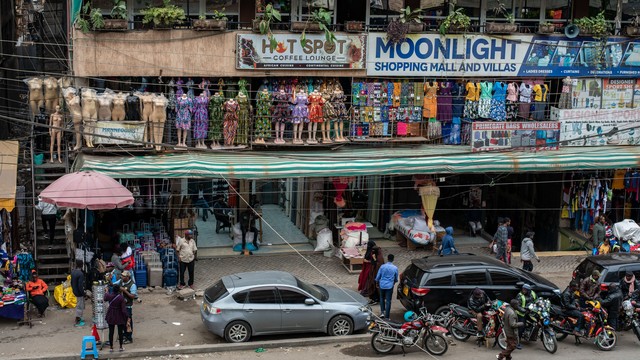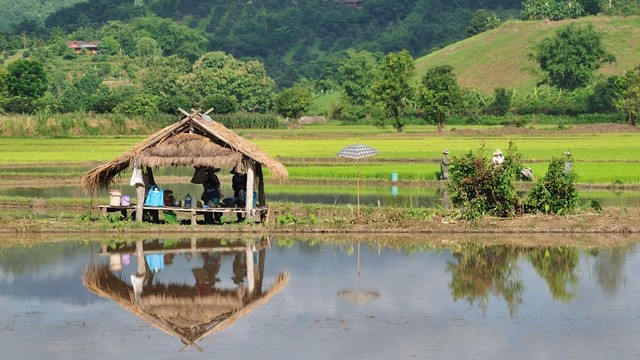What makes a citizen?
Citizenship is a topical issue in the UK: it’s a compulsory school curriculum subject and immigrants are required to sit a Citizenship exam to show their knowledge of their adoptive country. But what does `being a citizen’ really mean?


A young parliamentarian addresses the Shadow Children’s Parliament in Lesotho (Photo: World Vision Lesotho)
"No one is born a good citizen; no nation is born a democracy. Rather, both are processes that continue to evolve over a lifetime. Young people must be included from birth. A society that cuts off from its youth severs its lifeline."
- Kofi Annan
As we welcome in 2012 and look back at 2011, one significant event stands out for those of us in the UK: the English summer riots. These started in Tottenham, London, sparked off by a young man killed by police officers, and then spread to other parts of London and other towns in England. It shocked the nation and gave politicians a huge wake-up call. The government set up an Independent Riots Communities and Victims Panel and, at the end of 2011, it published its interim report, which outlined its findings relating to some of the underlying causes of the unrest and anger. Those affected by the riots, as well as those directly involved in rioting, were interviewed as part of the consultation process. The majority of rioters brought before the courts were aged between 18 and 24. One question put to these young people was, “Why did you attack your own community?” The response was: “What community?”
There is a link between being part of a community and being a citizen. A citizen belongs somewhere, and has responsibilities and rights. It could be said that those young rioters had no sense of responsibility, and a perverse expectation of their own rights. Since the riots, there have been numerous initiatives aimed at greater community cohesion in affected areas, and many of these have been community-led and have challenged prevailing institutional structures. They have opened up spaces for community members to engage. At the same time, we are seeing instances around the globe of people demanding accountability from those in power. The Arab Spring is still unfolding. The Occupy campaign has grabbed the world’s attention. But are young people really being listened to in a constructive way and are they finding spaces to participate in as citizens?
The digital arena is one space which has opened up for them. Social networking sites, such as Facebook, and mobile technology, are particularly popular with young people. The platforms provide them with the opportunity to develop new communication skills to get their messages across to a wide audience in powerful but non-violent ways, using their own voices and talents. Of course many young people using social networking sites are focused firmly on less lofty ideas – such as which party to go to – and have used them to incite others in less positive ways, such as during the English riots. But some are using social media to inspire and motivate others to demand their rights as citizens.
Looking towards sub-Saharan Africa, which has the world’s largest youth population, the latest issue of Participatory Learning and Action (PLA) shows how its young people are rising up to the challenge of engaging in policy and governance processes. Entitled Young Citizens: youth and participatory governance in Africa, it gives examples of the creativity, energy and enthusiasm that young people can bring to these processes, challenging perceptions of passive youth disinterested in changing their society for the better. As well as finding new spaces, such as the internet, these young citizens are redefining other spaces – and engaging directly with government. In Lesotho, a first-ever simulation of a real parliament sitting was held in the national parliament buildings and included 100 children who called for the speedy enactment of the country’s Children’s Protection and Welfare Bill.
Drawing a parallel with the violent scenes in London in August 2011, the 2007 post-election violence in Kenya was a classic example of how young people can be caught up in destructive behaviour. Incited and abetted by politicians and local leaders, gangs of armed youth engaged in looting, rioting, and killing in parts of Kenya. Overall, there was a sense of powerlessness felt by many young people, particularly boys, and engaging in violence was a way that made them feel empowered. They, like their English counterparts, were also very critical of the negative attitudes of law enforcement agencies towards them.
But, as another case study in this issue of PLA shows, some young Kenyans are challenging the negative stereotypes imposed upon them. They have developed a participatory rights-based youth situation analysis, which examines the underlying issues facing young people in the country’s different provinces. This emphasises the positive aspects and focuses on what is needed to fulfil their dreams – not only for themselves, but also their communities and Kenya as a whole. The analysis prioritised key issues and showed how much young people can achieve when given the right opportunities. It was presented at a national workshop and to the Ministry of Youth and Sports.
Whatever the media or format, the strong message that comes out of this publication is that if young people develop good governance skills at an early age, they can play an important role in shaping their own future and remain engaged citizens in adulthood. This message is as relevant to the citizens of Nairobi, as it is to those living in Nottingham or Nobeoka, Japan.
Read Young citizens: youth and participatory governance in Africa



